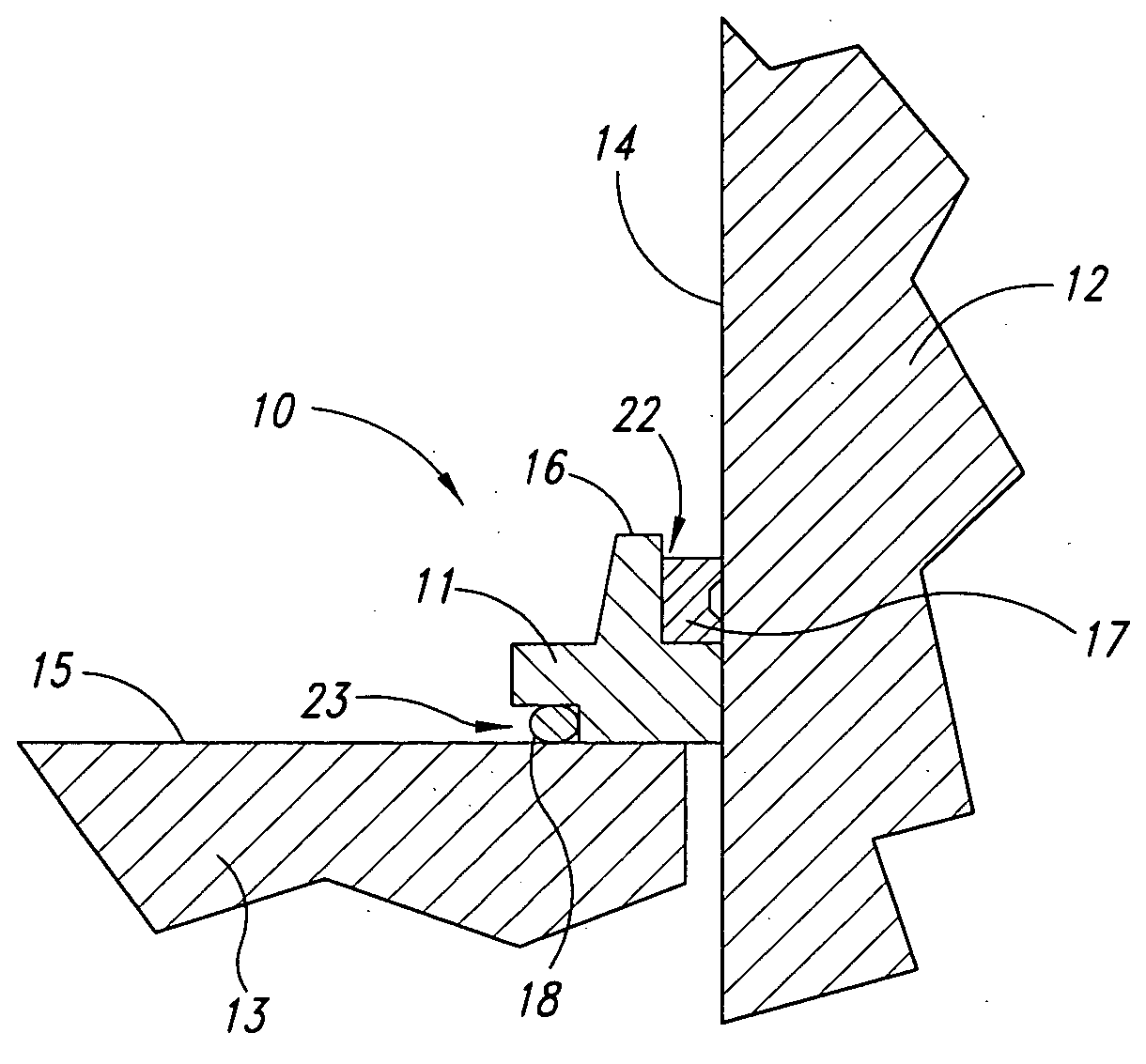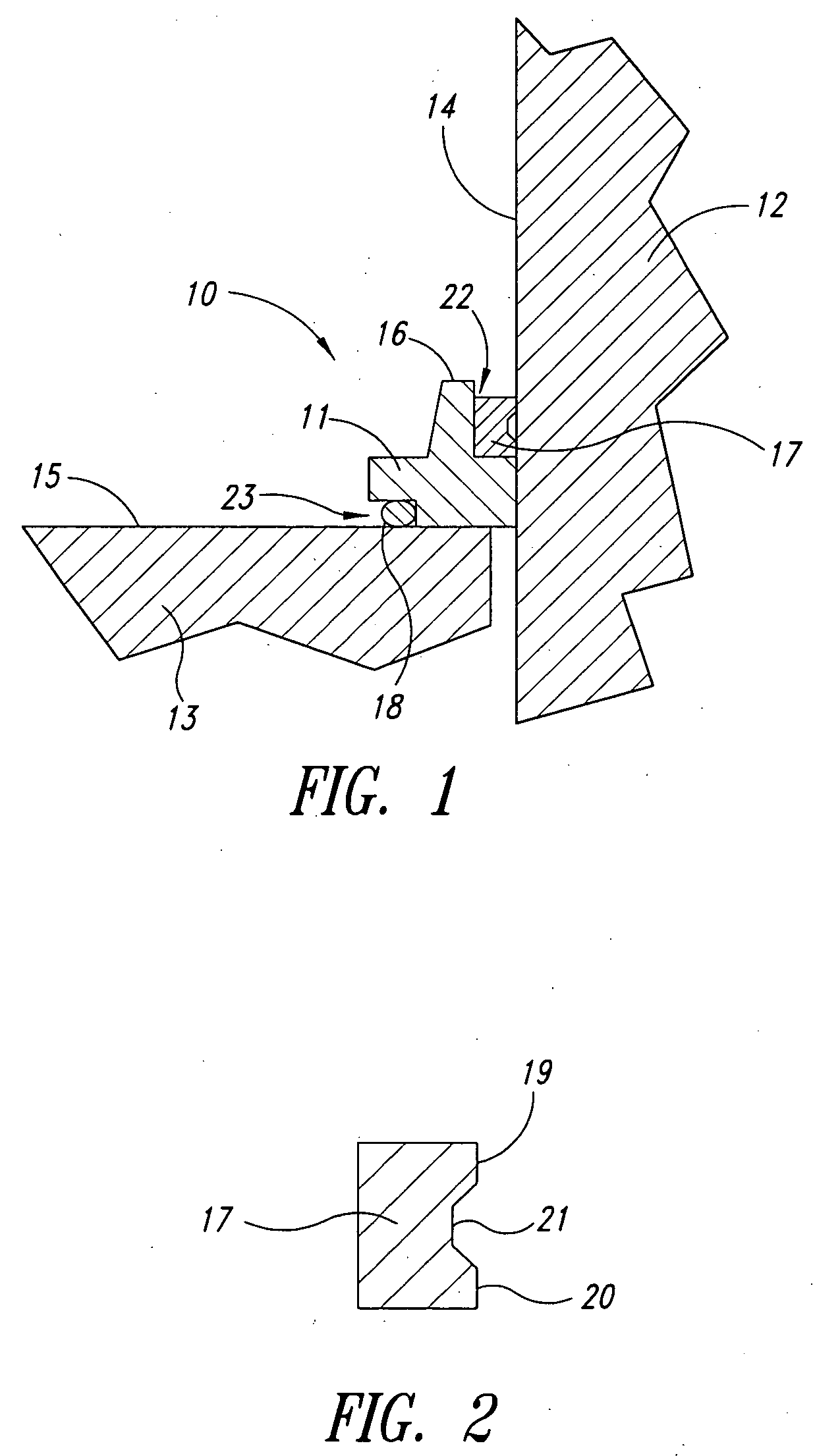Seal assembly for ultrahigh-pressure vessels
a technology of ultra-high pressure and seal assembly, which is applied in the direction of engine seals, container filling methods, container discharging methods, etc., can solve the problems of difficult sealing of fluids at extremely high pressures, pressures in excess of 15,000 psi, and greater pressures, e.g., up to and beyond 75,000 psi, so as to improve the integrity of the seal assembly and improve the quality and longevity of the seal
- Summary
- Abstract
- Description
- Claims
- Application Information
AI Technical Summary
Benefits of technology
Problems solved by technology
Method used
Image
Examples
Embodiment Construction
[0012] The present invention is directed toward seals in sealing systems for high pressure fluid containment, such as high pressure vessels. In one embodiment, as illustrated in FIG. 1, a seal assembly 10 comprising a metal support ring 11, a first polymer seal 17 and a second polymer seal 18 is positioned adjacent a first sealing surface 14, such as a wall of a pressure vessel 12, and a second sealing surface 15, for example an inner surface of an enclosure 13.
[0013] As discussed previously, the vessel 12 and closure 13 expand and move relative to each other as the pressure in the vessel cycles up and down. The radial and axial expansion and movement of the vessel wall 12, closure 13 and seal assembly 10, results in relative movement between the support ring 11 and vessel wall 12. In conventional systems, this results in galling and scratching of the vessel wall 12 which in turn causes damage to the polymer seal, resulting in seal failure.
[0014] These problems are substantially a...
PUM
 Login to View More
Login to View More Abstract
Description
Claims
Application Information
 Login to View More
Login to View More - R&D
- Intellectual Property
- Life Sciences
- Materials
- Tech Scout
- Unparalleled Data Quality
- Higher Quality Content
- 60% Fewer Hallucinations
Browse by: Latest US Patents, China's latest patents, Technical Efficacy Thesaurus, Application Domain, Technology Topic, Popular Technical Reports.
© 2025 PatSnap. All rights reserved.Legal|Privacy policy|Modern Slavery Act Transparency Statement|Sitemap|About US| Contact US: help@patsnap.com


